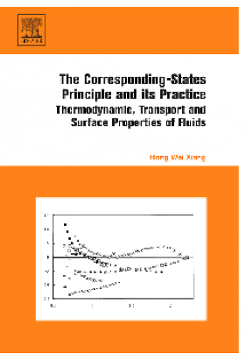
Additional Information
Book Details
Abstract
The corresponding-states principle helps the understanding and calculating of thermodynamic, transport, and surface properties of substances in various states, required by our modern lifestyle. The Corresponding-States Principle and its Practice: Thermodynamic, Transport and Surface Properties of Fluids describes the origins and applications of the principle from a universal point of view with comparisons to experimental data where possible. It uses the universal theory to explain present theories. Emphasis is on the properties of pure systems, and the corresponding-states theory can also be extended to mixtures, which are treated as pure systems. Furthermore, the author discusses current progress, and shows technicians how to derive practical equations from molecular modeling. The Corresponding-States Principle and its Practice: Thermodynamic, Transport and Surface Properties of Fluids is the ideal handbook for those in chemical science and engineering related to energy, environment, natural gas, and petroleum.
* Describes the origins and applications from a universal viewpoint
* Includes experimental data for comparisons
* Suitable for researchers, applied engineers, and those interested in the corresponding states theory
"The Corresponding-States Principle and its Practice, is a very interesting source book, of significant value not only to thermophysicists, but also to all engineers or scientists in need of predicting properties in general. Methods presented and derived in this book, are expected to be of value to the calculation of the thermophysical properties of gaseous, liquid, and solid states of matter, in most ranges of temperature, pressure, density, and other relevant variables."
Marc J. Assael, Professor of Thermophysical Properties, Faculty of Chemical Engineering Aristotle University, Thessaloniki, Greece (printed in International Journal of Thermophysics in May 2006)
" This book is highly recommended to our profession in applied fields of petroleum, natural gas, and environmental science and engineering, and the fundamental fields of molecular-based study of fluids and phase transitions included highly nonspherical molecules into the corresponding-states frame with about one order of magnitude more accurate than that of Pitzer et al. for heavy hydrocarbon, polar, associating, and hydro-bonding molecules, and provided a new way to understand the behavior of properties of nonspherical molecules"
Journal of Petroleum Science and Engineering, December 2004
